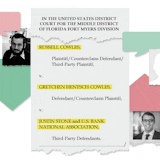The past month has been particularly newsy on the wine front. But making sense of it all is not always simple. So here's what Paul Harvey would have called "the rest of the story" on these happenings:
Arsenic and grapes
The story: Many wines are laced with deadly arsenic, according to a lawsuit filed in Los Angeles. Among the "dangerous" wines are many bottles or boxes from such popular brands as Franzia, Sutter Home and Menage A Trois.
The rest of the story: Thanks in large part to a CBS News report on the issue, this story has had a long shelf-life. As it turns out, the company filing the class-action suit, Denver-based BeverageGradesCQ, is trying to market its arsenic-testing services to wineries. Hmm.
True, many wines have arsenic levels that exceed the Environmental Protection Agency's maximum levels of 10 parts per billion (ppb) for drinking water. But that standard is based on the consumption of 2 liters of water per day; anyone quaffing that much wine has considerably more to worry about on the health front.
Also, the Canadian government's arsenic threshold is 100 ppb, and in the European Union it's 200 ppb. None of the wines tested by BeverageGrades came in over 50 ppb, and about 75 percent had 10 or fewer ppb, according to several news reports.
Bottom line: There is as much or more arsenic in tuna, shrimp, apple juice and Brussels sprouts as in your average wine. Oh, and I'm glad most lawsuits don't engender one-millionth of the attention this one has.
Nutrition for grapes
The story: There are bacteria in your wine, and they might be coming from the soil underneath the vines — and having a marked effect on the final product. Researchers from the Argonne National Laboratory in Illinois found that the microbes around a vine's roots find their way to the grapes.
The rest of the story: While it has long been known that wines contain bacteria and other microbes, this study could change the way vintners look at the concept of terroir and lead to advancements in grape hardiness and perhaps flavor.



